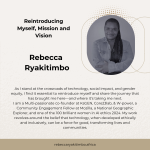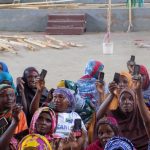
Bridging the Digital Divide & Empowering Communities in Mkomazi National Park
I’d like to take you all on a virtual tour in the heart of Tanzania in Mkomazi National Park where I will introduce you to wonderful communities that call this land home. A unique challenge exists—a challenge that intertwines the preservation of wildlife with the education and empowerment of local communities. As a National Geographic Explorer, my mission has always been to leverage technology and innovation to address the complex issues at the intersection of conservation and community development.
Recently, this mission took a tangible form as we installed two computer labs in schools located in districts bordering Mkomazi National Park. This project, however, was more than just about providing digital access—it was about using technology as a bridge between human and wildlife coexistence.

Human-wildlife conflict is a pressing issue in areas surrounding protected reserves like Mkomazi. As wildlife encroach on agricultural lands, local communities often face difficult choices that can lead to the loss of crops, livestock, and, tragically, even lives. These conflicts can strain the delicate balance between conservation efforts and the livelihoods of those living on the park’s borders.

Understanding the need for a sustainable solution, we partnered with Smartcore, an edtech company dedicated to enhancing educational outcomes in underserved areas, and the Tanzania Wildlife Authority (TAWA). Together, we installed Kisomo, an innovative edtech solution designed to not only improve digital literacy but also to educate children and communities about human-wildlife conflict and conservation strategies.
These computer labs are more than just rooms filled with technology; they are gateways to a new world of knowledge and possibilities. By equipping these schools with digital tools, we are empowering the next generation to become stewards of their environment—fostering an understanding of the importance of wildlife conservation and how they can actively participate in it.
This project is particularly close to my heart. As a National Geographic Explorer, I have spent years documenting and studying the impacts of human activity on wildlife and ecosystems. But this project allowed me to take that work a step further—to not just observe and report, but to actively engage in creating solutions.
Seeing the smiles on the faces of children as they interacted with the computers for the first time, knowing that they now have access to a world of knowledge and tools to understand their environment better, was incredibly rewarding. It reaffirmed my belief that technology, when applied thoughtfully and inclusively, can be a powerful catalyst for change.
Looking ahead, this initiative is just the beginning. It’s part of a larger vision to use digital tools and education to address complex issues at the intersection of technology, conservation, and community development. As we continue to roll out these labs and expand the reach of Kisomo, I am more determined than ever to bridge the digital divide and empower communities to take charge of their future.
But this is not a journey I can undertake alone. I invite you to join me.




